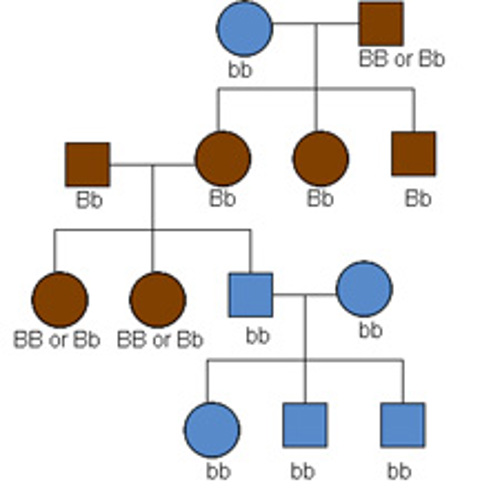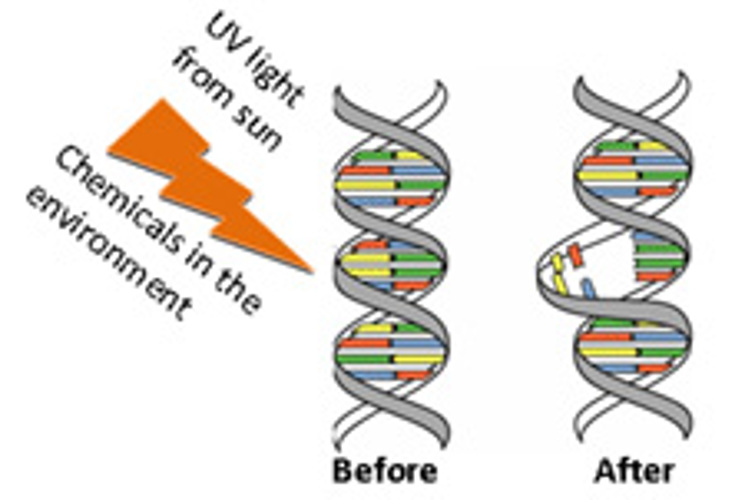
Is Gardner’s Syndrome genetic and what are the effects?
November 4, 2010

- Related Topics:
- Dominant and recessive,
- Cancer,
- Autosomal dominant inheritance,
- Genetic conditions,
- Genes to proteins
A curious adult from California asks:
“Is Gardner’s Syndrome genetic and what are the effects?”
Editor’s Note (7/22/22): Gardner’s syndrome is now categorized as under the umbrella of Familial Adenomatous Polyposis (FAP) and is not recognized as a separate disease.
Yes, Gardner’s syndrome (GS) is definitely genetic. And it can have some pretty severe effects too.
People with GS tend to have lots of growths called polyps in different parts of the body. In fact, one of the first signs that a person may have GS is when a doctor finds intestinal polyps.

People with GS have hundreds of growths called colon polyps (Image via Shutterstock)
These growths run a high risk of turning cancerous and spreading. If left untreated, most patients end up with tumors in many parts of the body. They can get cancer in their gastro-intestinal tract, skin and possibly other organs like the liver and brain as well.
Luckily, though, GS isn’t very common — only about one in 10,000 Americans has it.1 And it can be screened for with a genetic test to keep it from being passed on.
Usually for someone to end up with GS, one of his or her parents has to have it too. If one parent has GS, then each child has a 50% chance of ending up with GS. If both parents have GS, then the chances go up to 75%.
About 20% of cases happen without any family history.1 For these people, GS just pops up out of nowhere. Now they can pass GS down to their kids too with the usual chances.
What I’ll do for the rest of the answer is focus on how GS is passed down and how it can just suddenly appear in some people. I’ll end with a brief discussion about why it can cause problems in so many parts of the body.
Differences in Genes can Cause Disease
We’ve all heard an aunt or grandparent say things like, “You have your father's hair” (or mother's eyes or grandfather’s nose). They don’t really mean you plucked it off their heads, of course. Usually, they mean that these are traits you inherited from that relative.
You got a certain trait because of the genes that you inherited from each of your parents. You have two copies of each of your genes — one from your mom and the other from your dad.
The fact that you have two copies of each of your genes matters because not all gene copies are the same. Genes come in different versions. And different versions and combinations of versions lead to certain traits.
Let’s take a simple example to see what I mean. Imagine an eye color gene that comes in two versions — brown (B) and blue (b). Because there are two versions, there are three possible combinations: BB, Bb, and bb.

In the above family tree, we see that blue individuals always have bb, but brown individuals can either have BB or Bb. This is what’s called a simple trait.
In genetics speak, the B form of the gene is called dominant and the b version is called recessive.
Gardner's syndrome is caused by an alternate version of a single gene (the APC gene). Unfortunately, the gene version that leads to GS is dominant (G) and the healthy gene is recessive (g). That means even a single copy of this gene is enough to cause the disease.
Imagine a child with one healthy (gg) parent and one sick (Gg) one. This child would have a 50% chance of ending up with a G and thus with GS.
This is because which copy of a gene you get from your parents is random, sort of like flipping a coin. You have a 50% chance for heads and a 50% chance for tails. And a 50% chance for a G and a 50% chance for a g.
Now we can see how GS is passed down if a parent has it. But how can a child get GS if neither parent has it?
To understand this, we need to dig a little deeper into what a gene is. And how they work.
Popping up out of Nowhere
A gene is really just the instructions for a specific protein. And that protein goes out into the cell and does a specific job.
These instructions are written in the language of DNA.
DNA’s alphabet has just four chemical bases called A, T, G, and C. Just like words in English, genes are spelled out using these bases.
Different versions of a gene may have small differences in the instructions they carry. Sometimes these differences can change the instructions in a gene. For example, one form of a gene might make you slightly taller and the other form might make you slightly shorter.
These kinds of differences usually come from our parents. Sometimes, though, these differences come from mistakes our cells make or from damage from the outside world. When a difference is pretty new, it is called a mutation. This is how a disease like GS can just suddenly appear in a family tree.

If a mutation happens early enough in development or in a sperm or egg, then it can be passed down to the next generation. This is actually how all the wonderful differences we see around us started out. Unfortunately, these changes can also sometimes lead to diseases like cancer or GS.
Out of Balance
As I said before, a gene is really just the instructions for a specific protein. And each protein has a specific job to do in a cell.
Some jobs are common to all cells, like deciding when to divide into two cells or when to move from one part of an organ to another part. What happens if a gene that controls one of these jobs is broken?
A broken eye color gene just makes different eye colors. But genes for deciding when cells should divide can cause serious problems like cancer if they don’t work right.
Something as important as the decision about when a cell should divide is controlled by lots of genes. Oncogenes switch on cell division and tumor suppressor genes switch it off. Both sets of genes do this by making their own proteins. Deciding when to divide is like a balancing act between these two sets of proteins.
APC and beta-catenin are two such proteins. Imagine a see-saw, with APC on one end and beta-catenin on the other. If there’s more beta-catenin, the cell tilts over to the cell division side. And if there’s enough APC to balance the beta-catenin, cell division stops.

Description: A schematic showing APC and B-catenin molecules balanced on a see-saw, followed by an unbalanced see-saw where there is too much B-catenin.
The normal APC protein keeps the see-saw balanced by destroying extra beta-catenin. GS is caused by a broken APC gene. People with GS make an alternate form of the APC protein that can’t balance out beta-catenin. So their cells keep collecting beta-catenin and can't stop dividing. Ultimately, this makes a polyp, which can become a tumor. Cells can even break away from the tumor and form new tumors in other organs.
If you’d like to read more about the balancing acts that oncogenes and tumor suppressors perform, click here.

 Skip Navigation
Skip Navigation
